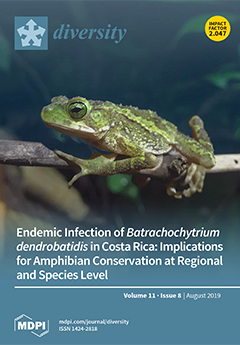Platycephalotrema n. gen. (Dactylogyridae) is proposed for four new species and 5 previously described species parasitizing the gills of flatheads (Scorpaeniformes: Platycephalidae) as follows:
Platycephalotrema ogawai n. sp. (type species) from
Platycephalus sp. 1 (type host) and
Platycephalus sp. 2, both of Nakabo & Kai (2013) (locally known as “Yoshino-gochi” and “Ma-gochi,” respectively) (Japan);
Platycephalotrema austrinum n. sp. from
Platycephalus endrachtensis Quoy & Gaimard (type host) and
Platycephalus sp. (Australia);
Platycephalotrema bassensis (Hughes, 1928) n. comb. from
Platycephalus bassensis Cuvier (Australia);
Platycephalotrema koppa n. sp. from
Platycephalus fuscus Cuvier (Australia);
Platycephalotrema macassarensis (Yamaguti, 1963) n. comb. from
Platycephalus indicus (Linnaeus) (China, Macassar);
Platycephalotrema mastix n. sp. from
P. fuscus and
P. endrachtensis (Australia);
Platycephalotrema platycephali (Yin & Sproston, 1948) n. comb. from
P. indicus (China) and
P. fuscus (Australia);
Platycephalotrema sinensis (Yamaguti, 1963) n. comb. from
Cociella punctata (Cuvier) (China);
Platycephalotrema thysanophrydis (Yamaguti, 1937) n. comb. from
Inegocia japonica (Cuvier),
Inegocia ochiaii Imamura, and
Cociella crocodilus (Cuvier) (Japan, China). Other species requiring further study but potentially members of
Platycephalotrema include
Ancyrocephalus vesiculosus Murray, 1931,
Haliotrema indicum Tripathi, 1957,
Haliotrema swatowensis Yao, Wang, Xia, & Chen, 1998, and
Haliotrema pteroisi Paperna, 1972. The primary features differentiating
Platycephalotrema include species having: (1) tandem gonads (testis postgermarial); (2) two prostatic reservoirs, each emptying independently into the base of the male copulatory organ; (3) a dextral vaginal pore and large vaginal vestibule; (4) dorsal and ventral pairs of morphologically similar anchors; (5) a ventral bar with spatulate ends; (6) a dorsal bar with bifurcated ends, and (7) absence of an accessory piece. The new species are described, and
P. thysanophrydis is redescribed based on newly collected and museum specimens.
Full article





